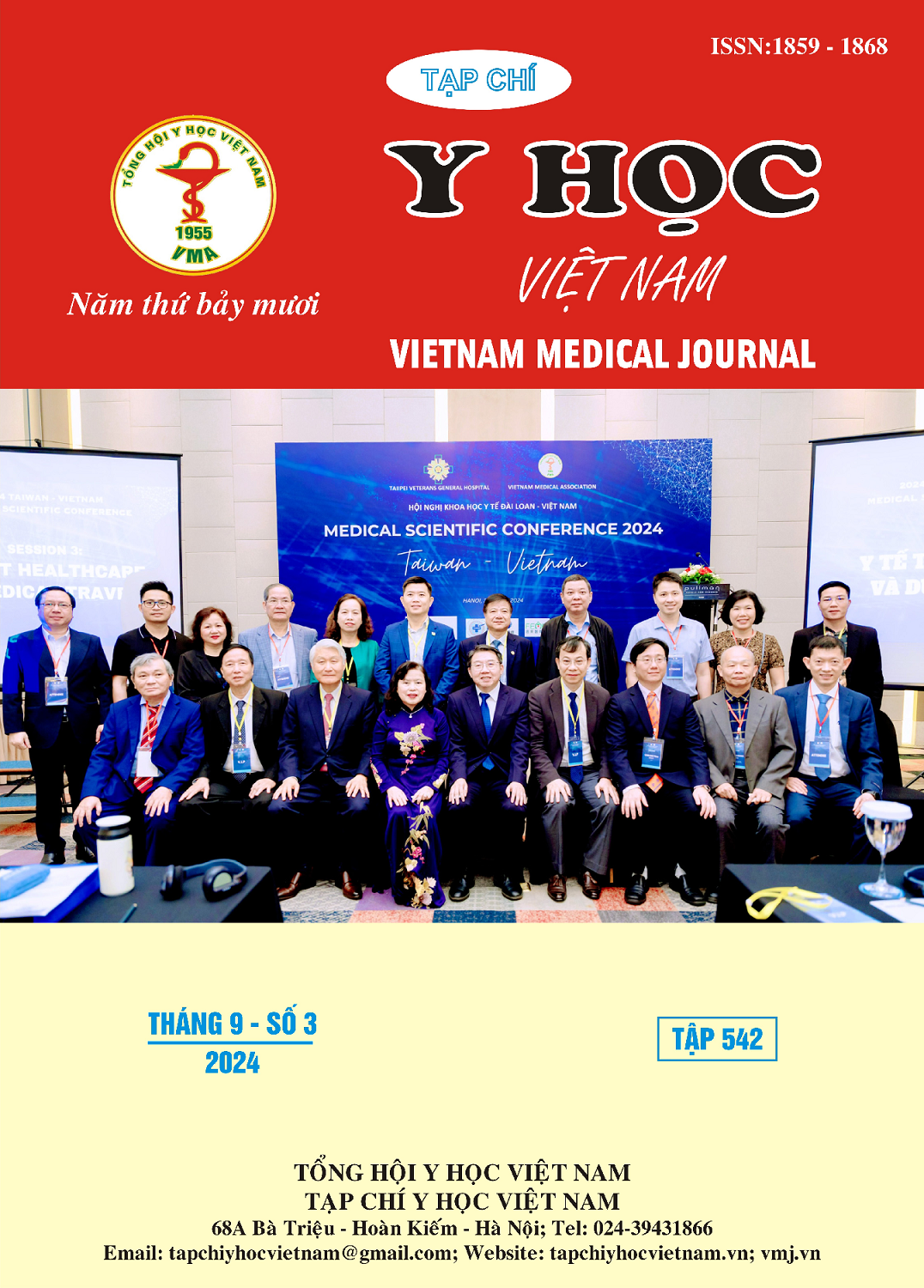ĐẶC ĐIỂM LÂM SÀNG VÀ CẬN LÂM SÀNG CỦU KHOANG CẠNH HỌNG TẠI BỆNH VIỆN CHỢ RẪY
Nội dung chính của bài viết
Tóm tắt
Mục tiêu: Khảo sát đặc điểm lâm sàng, cận lâm sàng của u khoang cạnh họng tại Bệnh viện Chợ Ray. Đối tượng và phương pháp nghiên cứu: Tất cả bệnh nhân u khoang cạnh họng đến khám và nhập viện điều trị tại Khoa Tai Mũi Họng, bệnh viện Chợ Ray. Kết quả và bàn luận: Tỷ lệ nam:nữ = 1,05:1; độ tuổi trung bình: 50,76 + 15,99 tuổi; nhóm bệnh nhân là nông dân chiếm ti lệ cao nhất 56,4%; bệnh nhân nông thôn gấp 3 lần thành thị. về đặc điểm lâm sàng: lý do nhập viện thường gặp nhất ở bệnh nhân u khoang cạnh họng là nuốt vướng (41,3%); triệu chứng lâm sàng thường gặp nhất là khối u trong họng chiếm 87,2%. về đặc điểm cận lâm sàng: u khoang trước trâm chiếm ti lệ (56,41%) nhiều hơn u khoang sau trâm (43,59%), giải phẫu bệnh của khối u có nguồn gốc tuyến nước bọt và thần kinh là thường gặp nhất, đều chiếm 38,5%. Nam giới có tỳ lệ u ác tính cao hơn nữ giới. Kết luận: u khoang cạnh họng hiếm gặp nên xác định được chẩn đoán và lên kế hoạch điều trị đóng vai trò quan trọng. Do khối u ở vị trí kín đáo nên bệnh nhân thường nhập viện khi u đã phát triển gây nuốt vướng. Việc phân chia khối u ở vị trí khoang trước trâm hay khoang sau trâm dựa vào moi liên quan của khối u với động mạch cảnh trong. Khối u khoang cạnh họng chủ yếu là u tuyến nước bọt và u thần kinh.
Chi tiết bài viết
Từ khóa
u khoang cạnh họng
Tài liệu tham khảo
2. Lien, K.-H., Young, C.-K., Chin, S-C., Liao, C. T., & Huang, S.-F. (2019), “Parapharyngeal space tumors: a serial case study”. Journal of international medical research, 47(8), pp. 4004- 4013.
3. van Hees T, van Weert 8, Witte B, René Leemans c (2018), “Tumors of the parapharyngeal space: the vu University Medical Center experience over a 20-year period”. Eur Arch Oto- Rhino-Laryngology. 275(4), pp. 967-72.
4. Sun F, Yan Y, Wei D, et al (2018), “Surgical management of primary parapharyngeal space tumors in 103 patients at a single institution”. Acta Otolaryngol. 138, pp. 85-89.
5. Shi, X., Tao, L., et al. (2016). “Surgical management of primary parapharyngeal space tumors: a 10-year review”. Acta Oto-Laryngologica, 137(6), pp. 656-661.
6. Lombardi, D,. Ferrari, M., et al. (2020). “Selection of the surgical approach for lesions with parapharyngeal space involvement: A single-center experience on 153 cases”. Oral Oncology, 109, 104872.
7. Kuet M-L, Kasbekar AV, Masterson L, Jani p (2015). “Management of tumors arising from the parapharyngeal space: A systematic review of 1,293 cases reported over 25 years”. Laryngoscope, 125(6), pp. 1372-81.
8. Lopez F & et al (2019). “Contemporary management of primary parapharyngeal space tumors”. Head Neck 41(2), pp. 522-535.
9. Olcay CB, Roland G, et al (2021). “Primary neoplasms of the parapharyngeal space: diagnostic and therapeutic pearls and pitfalls”. Eur Arch Otorhinolaryngol. DOI: 10.1007/s00405-021-06718-4.


